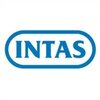ADL Chemist
20+ ADL Chemist Interview Questions and Answers

Asked in Jodas Expoim

Q. What is use of HPLC? Advantageous and Application? What is chromatography? Type of chromatogeaphy and used?
HPLC is a technique used to separate, identify, and quantify components in a mixture. Chromatography is a method to separate components.
HPLC is advantageous as it can separate complex mixtures with high resolution and sensitivity.
It is used in pharmaceuticals, food and beverage, environmental analysis, and forensic science.
Chromatography is a technique used to separate components based on their physical and chemical properties.
Types of chromatography include gas chromatograph...read more

Asked in Jodas Expoim

Q. What is principle of HPLC? How to work in that instrument?
HPLC is a chromatographic technique used to separate, identify, and quantify components in a mixture.
HPLC works by pumping a liquid sample mixture through a column packed with stationary phase material.
The components in the mixture interact differently with the stationary phase, causing them to separate and elute at different times.
The eluted components are detected by a detector and recorded as a chromatogram.
HPLC is commonly used in pharmaceuticals, food analysis, and envir...read more

Asked in Jodas Expoim

Q. Which types of detectors are used in gas chromatography?
Detectors used in gas chromatography include FID, TCD, ECD, NPD, and MS.
Flame Ionization Detector (FID) is used for organic compounds
Thermal Conductivity Detector (TCD) is used for inorganic compounds
Electron Capture Detector (ECD) is used for halogenated compounds
Nitrogen-Phosphorus Detector (NPD) is used for nitrogen and phosphorus-containing compounds
Mass Spectrometry (MS) is used for identifying unknown compounds

Asked in Jodas Expoim

Q. In which chromatography is a conductivity detector commonly used?
Conductivity detector is commonly used in ion chromatography.
Conductivity detector measures the ability of ions to conduct electricity.
It is used in ion chromatography to detect and quantify ions in a sample.
It is particularly useful for analyzing inorganic ions such as anions and cations.
Examples of applications include water quality testing, food and beverage analysis, and pharmaceutical analysis.

Asked in Jodas Expoim

Q. What is Define of PH? How many range of PH
pH is a measure of acidity or alkalinity of a solution. It ranges from 0 to 14.
pH stands for 'potential of hydrogen'
A pH of 7 is considered neutral, below 7 is acidic, and above 7 is alkaline
Each whole pH value below 7 is ten times more acidic than the next higher value
Each whole pH value above 7 is ten times more alkaline than the next lower value

Asked in Jodas Expoim

Q. What is Acid? What is base? Which range are Acid and base?
Acid is a substance that donates hydrogen ions, while base is a substance that accepts hydrogen ions. The pH scale ranges from 0-14.
Acids have a pH below 7, while bases have a pH above 7.
Acids taste sour and can corrode metals, while bases taste bitter and feel slippery.
Examples of acids include vinegar, lemon juice, and battery acid, while examples of bases include soap, bleach, and ammonia.

Asked in Ami Organics

Q. What is troubleshooting for GC and HPLC?
Troubleshooting GC & HPLC involves identifying and resolving issues with the instruments and analysis process.
Trubal shooting GC & HPLC is the process of identifying and resolving issues with gas chromatography and high-performance liquid chromatography instruments and analysis.
Common issues include poor peak shape, baseline noise, and retention time shifts.
Troubleshooting may involve adjusting instrument parameters, changing column or detector settings, or identifying and re...read more

Asked in Jodas Expoim

Q. Which detectors are bulky in gas chromatography?
Thermal conductivity detectors (TCD) and Flame ionization detectors (FID) are bulky in gas chromatography.
TCD and FID are commonly used detectors in gas chromatography
TCD measures thermal conductivity of the sample while FID measures ionization of the sample
Both detectors require bulky components such as a flame or a filament
Other detectors such as mass spectrometry (MS) or electron capture detector (ECD) are less bulky
Share interview questions and help millions of jobseekers 🌟


Asked in Jodas Expoim

Q. What is the UV-Visible range?
UV-visible range is the range of electromagnetic radiation that is visible to the human eye.
The UV-visible range is typically between 200-800 nanometers.
UV radiation has a shorter wavelength and higher energy than visible light.
Examples of UV-visible range applications include spectroscopy and photolithography.
UV radiation can be harmful to human skin and eyes.
Visible light is the portion of the UV-visible range that is visible to the human eye.

Asked in Jodas Expoim

Q. What is ion chromatography? And what is resin?
Ion chromatography is a technique used to separate and analyze ions in a sample. Resin is a solid material used in the process to exchange ions.
Ion chromatography separates ions based on their charge and affinity for the stationary phase
Resin is a solid material with charged functional groups that exchange ions with the sample
Examples of applications include analyzing water quality, food and beverage testing, and pharmaceutical analysis

Asked in Jodas Expoim

Q. What is Gas chromatography? And state advantageos
Gas chromatography is a technique used to separate and analyze volatile compounds in a mixture.
It involves injecting a sample into a column filled with a stationary phase and a carrier gas.
The compounds in the sample interact differently with the stationary phase and are separated as they travel through the column.
The separated compounds are detected and identified based on their retention time and other properties.
Advantages include high sensitivity, selectivity, and the abi...read more

Asked in Jodas Expoim

Q. What is the normal pH range?
The normal range of pH is between 7.35 and 7.45.
pH is a measure of acidity or alkalinity of a solution.
A pH of 7 is considered neutral, below 7 is acidic, and above 7 is alkaline.
The normal pH range of human blood is tightly regulated between 7.35 and 7.45.
Changes in pH can have significant effects on biological processes and can lead to health problems.

Asked in Jodas Expoim

Q. Which detectors are used in HPLC?
UV-Vis detector, fluorescence detector, refractive index detector, evaporative light scattering detector are commonly used in HPLC.
UV-Vis detector measures the absorbance of light by the sample
Fluorescence detector measures the fluorescence emitted by the sample
Refractive index detector measures the change in refractive index of the mobile phase
Evaporative light scattering detector measures the scattering of light by the sample
Asked in Dalas Biotech

Q. What is the principle of UV spectroscopy?
UV spectroscopy is based on the principle that molecules absorb ultraviolet or visible light to excite their electrons to higher energy levels.
UV spectroscopy measures the absorption of light in the UV or visible region of the electromagnetic spectrum.
The amount of light absorbed is proportional to the concentration of the absorbing species.
UV spectroscopy is used to determine the concentration of a substance in a sample, identify functional groups, and study reaction kinetic...read more

Asked in Jodas Expoim

Q. What is Normality? And what is molality?
Normality is the concentration of a solution expressed as the number of equivalents of solute per liter of solution. Molality is the concentration of a solution expressed as the number of moles of solute per kilogram of solvent.
Normality is a measure of the number of reactive species in a solution.
It is expressed in terms of equivalents per liter of solution.
Molality is a measure of the concentration of a solution in terms of the number of moles of solute per kilogram of solv...read more

Asked in Ami Organics

Q. What is GC and HPLC calibration?
Calibration GC & HPLC is the process of adjusting and verifying the accuracy of the instruments to ensure reliable and precise results.
Calibration is necessary to ensure accurate and precise measurements
GC and HPLC are analytical instruments used in chemical analysis
Calibration involves adjusting the instrument to match known standards
Verification of accuracy is done by comparing the instrument's readings to known standards
Regular calibration ensures reliable and consistent r...read more

Asked in Jodas Expoim

Q. What is the principle of IR spectroscopy?
IR spectroscopy is based on the principle of absorption of infrared radiation by molecules.
IR spectroscopy measures the vibrations of molecules in the infrared region of the electromagnetic spectrum.
Different functional groups absorb at different frequencies, allowing for identification of compounds.
IR spectra can be used to determine the presence of impurities or contaminants in a sample.
IR spectroscopy is widely used in chemistry, biochemistry, and materials science.

Asked in Ami Organics

Q. What is the validation process for GC and HPLC?
Validation of GC and HPLC involves testing and verifying the accuracy and reliability of the instruments and methods used for analysis.
Validation ensures that the instruments and methods used for analysis are accurate and reliable.
It involves testing the instruments and methods using known standards and samples.
Validation parameters include accuracy, precision, linearity, specificity, and robustness.
Validation is necessary to ensure that the results obtained from the instrume...read more

Asked in Jodas Expoim

Q. What is oxidation and reduction?
Oxidation is the loss of electrons, while reduction is the gain of electrons.
Oxidation involves the addition of oxygen or the removal of hydrogen from a molecule.
Reduction involves the addition of hydrogen or the removal of oxygen from a molecule.
Oxidation and reduction always occur together in a chemical reaction, known as a redox reaction.
Examples of redox reactions include combustion, rusting, and photosynthesis.

Asked in Ami Organics

Q. What are the principles of GC and HPLC?
GC and HPLC are analytical techniques used in chemistry to separate, identify, and quantify components in a mixture.
GC stands for Gas Chromatography and HPLC stands for High Performance Liquid Chromatography.
Both techniques involve passing a mixture through a stationary phase and a mobile phase to separate its components based on their physical and chemical properties.
GC is used for volatile and semi-volatile compounds, while HPLC is used for non-volatile compounds.
GC uses a ...read more

Asked in Jodas Expoim

Q. Which type of ion chromatography do you have experience with?
There are two types of ion chromatography: cation exchange chromatography and anion exchange chromatography.
Cation exchange chromatography separates positively charged ions based on their affinity for negatively charged resin.
Anion exchange chromatography separates negatively charged ions based on their affinity for positively charged resin.
Both types of ion chromatography use a mobile phase and a stationary phase to separate ions.
Ion chromatography is commonly used in enviro...read more

Asked in Jodas Expoim

Q. Which functional groups are you familiar with?
Functional groups are specific atoms or groups of atoms within a molecule that determine its chemical properties.
Functional groups are responsible for the reactivity and solubility of a molecule.
Common functional groups include hydroxyl, carbonyl, carboxyl, amino, and phosphate groups.
Functional groups can be identified by their characteristic chemical reactions and spectral properties.
Functional groups play a crucial role in organic chemistry and biochemistry.

Asked in Ami Organics

Q. What is RRT?
RRT stands for Relative Retention Time, a measure of the separation between two compounds in a chromatography column.
RRT is calculated by dividing the retention time of a compound by the retention time of a reference compound.
It is used to identify and quantify compounds in a mixture.
RRT values are specific to the chromatography system and conditions used.
For example, RRT can be used to distinguish between isomers with similar retention times.

Asked in Mangalam Drugs & Organics

Q. What is the difference between the Limit of Detection (LOD) and Karl Fischer titration?
LOD is a method to determine the amount of water in a substance, while Karl Fischer is a specific titration method for measuring water content.
LOD stands for Loss on Drying and is a method used to determine the moisture content in a substance by measuring the weight loss after drying.
Karl Fischer titration is a specific method used to accurately measure the water content in a sample by titrating it with a Karl Fischer reagent.
LOD is a more general method that can be used for ...read more

Asked in Ami Organics

Q. what is adit try ?
Adit try is not a known term in chemistry or any other field.
Adit try is not a recognized term in any field.
It is possible that the interviewer misspoke or meant to ask a different question.
Without further context, it is impossible to provide a more specific answer.

Asked in Mangalam Drugs & Organics

Q. What type of column is used in HPLC?
The type of column in HPLC is typically a stainless steel tube filled with silica particles.
Common types include C18, C8, and C4 columns
Columns can vary in length, diameter, and particle size
The choice of column depends on the analyte being separated

Asked in Mangalam Drugs & Organics

Q. Type of GC column
The type of GC column refers to the material used to separate compounds in gas chromatography.
GC columns can be made of different materials such as silica, polyethylene glycol, or bonded phases like phenyl or cyano.
The choice of GC column depends on the compounds being analyzed and the desired separation efficiency.
For example, a non-polar column like a 5% phenyl methyl siloxane column is suitable for analyzing hydrocarbons.
On the other hand, a polar column like a polyethylen...read more

Asked in Mangalam Drugs & Organics

Q. Type of GC detector
The type of GC detector refers to the specific technology used to detect and quantify analytes in gas chromatography.
Common types include flame ionization detector (FID), thermal conductivity detector (TCD), electron capture detector (ECD), and mass spectrometry (MS)
FID is sensitive to organic compounds, TCD is non-destructive and universal, ECD is selective for electron-capturing compounds, MS provides mass spectra for identification
Choice of detector depends on analyte type...read more

Asked in Geo Chem Laboratories

Q. Type of titration
The type of titration refers to the method used to determine the concentration of a substance in a solution.
Common types include acid-base titrations, redox titrations, and complexometric titrations.
In acid-base titrations, a pH indicator is often used to determine the endpoint.
Redox titrations involve the transfer of electrons between reactants.
Complexometric titrations are used to determine the concentration of metal ions by forming complexes with specific ligands.
Interview Questions of Similar Designations
Interview Experiences of Popular Companies








Reviews
Interviews
Salaries
Users

















